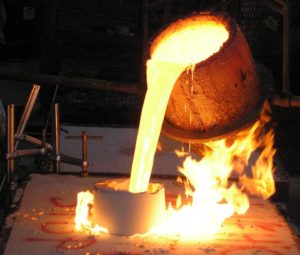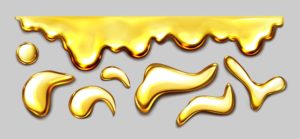Precious metals are a necessary component of industry.
They are used in everything from coins to electronics.
While there are many different types of precious metals, only a few are essential for most industrial purposes.
In this blog post, we will discuss the most important precious metals for industry. We will also explore why these metals are important and their various applications.
Industrial processing often requires extremely durable materials in order to reduce downtime and increase productivity.
Specially designed tools made from metals such as stainless steel, aluminium, titanium, and tool steel can process metal parts with exceptional precision and durability.
In addition, these types of equipment can be used for a variety of industrial applications, including automobile manufacturing, hand tool production, food processing equipment, and even medical equipment.
Precious metals are an essential component used to create many electronic products that are designed to keep the world’s technology humming along.
For example, gold is one of the most sought-after materials, because it resists corrosion better than any other metal.
How Do Precious Metals Vary In Corrosion Resistance?
Stainless steel is the best option for equipment that needs to withstand harsh elements, such as high heat or extreme weather conditions.
Aluminum is also an excellent choice because it resists corrosion by forming a passivating oxide layer on its surface.
Titanium possesses exceptional strength, which makes it a prime choice for equipment in corrosive environments.
Tool steel is a popular material used in the construction of drilling bits and rock-cutting tools because of its superior wear resistance and toughness.
Gold, silver, platinum, and palladium are also great options for corrosion prevention.
What Precious Metals Can Be Used to Conduct Electricity?
Silver is the best option here.
It has the highest conductivity (lowest electrical resistance) of all metals.
Silver can be used to form low-resistance contacts in batteries, switches, pins on printed circuit boards, safety devices for railroads and amusement rides, relays, fuses, speakers, connectors, hoses, and cables.
What Are Indispensable Raw Materials For Industry?
Precious metals are essential materials in modern industry.
They are indispensable as catalysts, hardeners and modifiers of other metals, components in electronic circuits and devices, conductors of electricity and heat.
They are also refractory components for high temperature applications, or even as a starting point for chemical processes like the reduction of ores.
Is There Limited Availability For Precious Metals?
In short, Yes.
Precious metals are often found in small quantities within economically exploitable ore bodies, also containing other minerals, which have to be mined and processed.
No Substitute For Precious Metals
At present there are no substitutes available for precious metals when used as hardeners in steel alloy or in electronic applications.
This leads to either high costs or product defects when replacing them with other materials.
Increasing Scarcity of Sources
Global demand for the raw materials used to produce many products continues to rise (e.g., smartphones)
The scarcity of available reserves (and resources) has become increasingly problematic; the result is that recycled materials are increasingly used for new products.
How Do Precious Metals Affect Their Alloys?
The most important factor is the coefficient of expansion (melt-expansion).
If you want to make a metal alloy with two or more types of precious metals, the melting point should be lower than the lowest melting point in the alloy.
For example, if you add gold to nickel, the alloy will be yellow because gold has a lower melting point than silver or nickel.
If you add palladium to copper, however, the alloy will be silver-colored because palladium melts at a lower temperature than either silver or copper.
Precious metals also affect alloys in terms of corrosion resistance and strength.
For example, nickel-silver is not only corrosion resistant, but also stronger than silver.
It contains up to 40% silver combined with nickel or copper.
This alloy has a very low melting point and is more ductile than silver while maintaining its strength.
Why Are Precious Metals Used in Electronic Circuits?
The main reason is that these metals resist corrosion when in contact with other elements.
Gold retains its lustre, even when alloyed with most other metals, which is why it’s used to form high-quality connector pins and prongs (for example, when connecting to an antenna).
Silver has superior electrical conductivity compared to copper; therefore, it can be used wherever resistance must be minimized, such as in antennae and other radio-frequency components.
The use of silver has increased within the electronics industry because it possesses 10 times more conductivity than copper, at one-fifth of the price!
In combination with its strength and resistance to oxidation, silver’s conductivity gives it a significant advantage over metals that are less expensive or more easily obtained.
What Is The Most Widely Used Precious Metal?
Silver leads in both supply and demand as a base for solders and glazing materials (e.g., glass).
It also plays an important role in electrical connections; it is valued for its electrical conductivity, low contact resistance, ductility, reflective nature, reflectivity, reflectance, conductivity, malleability, softness, and ease of fabrication.
What Are The Most Common Precious Metal Alloys?
The two most common precious metal alloys used in today’s industry are silver-copper (92.5% Ag / 7.5% Cu) and gold-copper (75% Au / 25% Cu).
Silver-copper alloys have a high silver content and low thermal conductivity, which makes them particularly well suited for applications requiring resistance to heat flow.
The alloys have excellent solderability compared to pure silver and are highly ductile even in thin sections.
They work harden easily when deformed, and annealing can be done in air at relatively low temperatures.
Silver-copper alloys are also used in applications where there is exposure to dezincification (e.g., hot water tanks).
Gold-copper alloys have good corrosion resistance and thermal stability.
They work harden less than silver-copper alloys and have a slightly higher electrical conductivity. They are useful in applications where corrosion resistance is required.
How does temperature affect the melting point of different precious metals?
The melting points of different metals are dependent on the surrounding environmental conditions.
For example, gold melts at 1064°Celsius while platinum melts at 1755° Celsius.
The change in temperature has a direct impact on the temperatue required to achieve that state, however it does not affect what state the metal will turn into once it reaches its melting point.
So in general, when the surrounding temperature is increased it takes less energy to reach the same melting point.
What Happens When You Add Additional Elements or Compounds?
Gold and silver are chemically similar, so they share many similar physical properties including their collective Group 11 periodic table placement, high malleability and ductility, resistance to corrosion and high reflectivity.
Despite their similarities, silver has a much lower melting point than gold, coming in at 961°Celsius compared to 1064° Celsius.
This is due to the differences in atomic size between gold (196.9pm) and silver (127.6pm).
Temperature changes can also affect how metallic an element or compound is.
For example, when mercury metal reaches temperatures above 356°Celsius it will become more shiny and red in colour.
This is because the mercury atoms are combining to form an entirely new substance called ‘mercuric oxide’.
Atomic size isn’t the only factor impacting the melting point of metals; different alloys also have different melting points.
For example, a small amount of boron added to iron, for example, has a profound impact on the steel’s melting point.
The Bottom Line
When it comes to industry, there’s no doubt that precious metals play a crucial role.
But what are the most important ones? How do they work in different industries and why is their importance so significant?
Gold, silver, platinum and palladium are valuable because they’re rare in nature.
The precious metals industry is an intricate part of our world.
They are used for everything from jewelry to electronics, and they have a variety of properties that make them so valuable in industries across the globe.
Precious metals are also important to industry because they have the ability to conduct and store heat, which is crucial in many industrial applications.
They also provide a way for industries that rely on electricity or magnetic fields to generate power efficiently and safely.
Lastly, these metals can be used as catalysts in chemical reactions where other substances would not work at all due to their specific properties.
All of this makes them an indispensable part of any company’s inventory!
We hope you enjoyed learning about how precious metal impacts our everyday lives.




